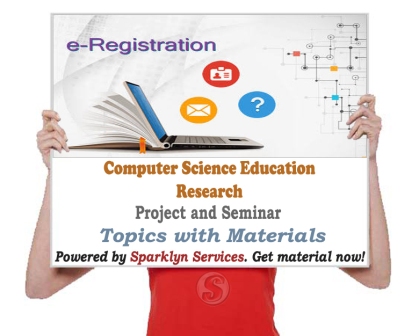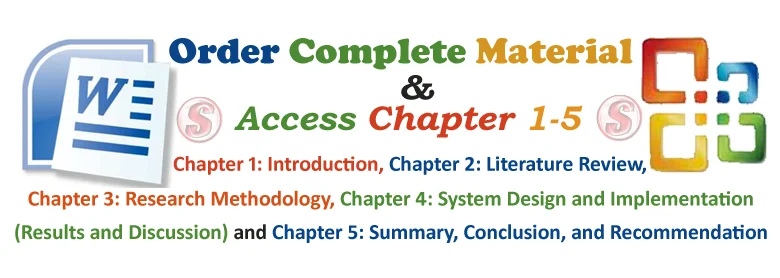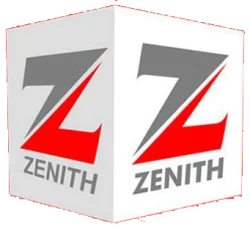1.1 Introduction
The Internet of Things (IoT) can be defined as a system of interrelated computing devices, mechanical and digital machines, objects, animals or people that are provided with unique identifiers and the ability to transfer data over a network without requiring human-to-human or human-to-computer interaction. Internet of Things has acquired a remarkable attention in the last decade. This phenomenal innovation designs a world where billions of smart, interacting things are able to offer wide range of services to near and remote entities. Internet of Things devices can be remotely controlled to achieve the desired functionality (Khan and Salah, 2018). Internet of Things helps the plant breeding by the scale of humidity and temperature providing the best conditions for the plant growth (Sato et al., 2016).
As a prelude to other parts of this study, this chapter will discuss the background upon which this study was initiated, the statement of problems that led to this study, the Aim and Objectives of the study. Others are Significance of the study, Scope of work, Research hypothesis and questions, Limitations of the Study and Definition of technical terms.
1.2 Background of Study
The Internet of Things is a new technological paradigm, designed as a global network of machines and devices capable of interacting with each other (Lee and Lee, 2015). The exchange of information between devices then takes place through the network using standard communication protocols. Connected smart devices or objects range from simple portable accessories to large machines, each containing sensor chips (Khan and Salah, 2018). The Internet of Things network can generate large amounts of data in different formats and use different protocols that can be stored and processed in the cloud (Chang, 2020).
The Internet of Things (IoT) refers to the use of intelligently connected devices and systems to harness data gathered by embedded sensors and actuators in machines and other physical objects (GSM Association, 2014). IoT influence future business network by self-organizing ability and transmission feature of real time responses among every sort of organizations. It is rapidly gaining ground in current unavoidable processing. The idea is essentially created on a thought, where there are various things or innovation. Every one of the articles has an interesting location and can communicate with different items. The things or items co-work with one another to arrive at a shared objective. The IoT is a triumph of appropriated registering frameworks having a gigantic similarity to accumulate process and disperse data utilizing remote and wired correspondence frameworks.
The Internet of Things (IoT) also called the Internet of Everything or the Industrial Internet, is a new technology paradigm envisioned as a global network of machines and devices capable of interacting with each other. The IoT is perceived as one of the most significant regions of future innovation and is increasing immense consideration from a wide scope of businesses. The genuine estimation of the IoT for undertakings can be completely acknowledged when associated gadgets can speak with one another and incorporate with seller oversaw stock frameworks, client care frameworks, business insight applications, and business examination.
Gartner (2014) conjectures that the IoT will arrive at 26 billion units by 2020, up from 0.9 billion out of 2009, and will affect the data accessible to production network accomplices and how the store network works. Firms will put resources into the IoT to upgrade production line work processes, improve following of materials, and advance dissemination costs. For instance, both John Deere and UPS are now utilizing IoT-empowered armada following innovations to cut expenses and improve supply proficiency. Notwithstanding producers' selection of the IoT, different assistance businesses are embracing the IoT to build income through upgraded benefits and become pioneers in their business sectors.
Disney’s MagicBand is a new wristband with RFID chips that serves as a ticket and connects to Disney’s data repository regarding park visitors. Kroger’s new IoT-based system, Retail Site Intelligence, is one complete retail platform of video analytics, wireless devices, POS devices, handheld sensors, IP cameras, and video management software that was designed to help customers have a better shopping experience by more easily finding the products they want and saving time at checkout. As IoT technology advances and increasing numbers of firms adopt the technology, IoT cost-benefit analysis will become a subject of great interest. On account of the potential yet unsure advantages and high venture expenses of the IoT, firms need to painstakingly evaluate each IoT-initiated opportunity and challenge to guarantee that their assets are spent judiciously.
Therefore, in Nigeria where the research was carried out, the activities that was conducted is to know the Internet of Things and It's Challenges for Usability in Nigeria.
1.3 Statement of Problems
Investigation revealed that the benefit and welfare that the IoT brings about are undeniable; however, there are some challenges to apply IoT. While the world is taking a digital shape, a country like Nigeria imports technology instead of producing. This approach makes them dependent on designers of digital world. For this reason, developing countries like Nigeria have to suitable for adoption of new technology.
The speed and method for implementing IoT differs from country to country. The priority of countries holding high product range is to benefit from flexibility to increase productivity. On the other hand, quality-focused approach is adopted by countries in order to decrease deficient products. This approach requires IoT in order to optimize systems through data mining. Contrary to this, developed countries are focused on increasing automation rate due to the high labor force.
1.4 Aim and Objectives of Study
The aim of the study is to investigate the Challenges for Internet of Things Usability in Nigeria. In achieving this aim, the following specific objectives were laid out as follows:
- To examine the usability impact of IoT in developing countries through a detailed literature survey;
- To examine the factors inhibiting the utilization of IoT devices in the area under study;
- To determine the level of internet of things development in Nigeria economy; and
- To proffer solution to the problems affecting the utilization of Internet of Things in Nigeria.
1.5 Research Questions
The study came up with research questions so as to be able to ascertain the above stated objectives. The specific research questions for the study are stated below as follows:
- Are there factors inhibiting the utilization of IoT devices in the area under study?
- What is the impact of IoT in developing countries?
- What is the level of internet of things development in Nigeria economy?
- What are the problems affecting the utilization of Internet of Things in Nigeria?
1.6 Research Hypothesis
In order to pursue the objective of this study, the following generalized statements have been designed to guide and aids in obtaining the result for the experiment to be conducted. For this work, the null hypothesis will be represented with H0 while the alternative hypothesis will be represented with hypothesis H1.
Hypothesis One
- H0: There are no significant factors inhibiting the utilization of IoT devices in the area under study
- H1: There are significant factors inhibiting the utilization of IoT devices in the area under study
1.7 Significance of Study
The Internet of Things (IoT) relevance of the study will help to improve safety and security of products and services by reliably identifying counterfeit products and elements. It will help policy makers and practitioners in understanding and removing challenges in order to achieve successful IoT adoption.
This study will be of immense benefit to other researchers who intend to know more on this study and can also be used by non-researchers to build more on their research work. This study contributes to knowledge and could serve as a guide for other study.
1.8 Scope of Study
The scope of the research is focused on the Internet of Things and It's Challenges for Usability in Nigeria.
1.9 Limitations of the Study
During the course of this study, many things militated against its completion, some of which are:
- Time Constraint: The time frame given to accomplish this project was very short due to school academic calendar and it was carried out under pressure which made the researcher not to implement some necessary features.
- Establishment Policies: Establishment policies posed a serious limitation as most staffs are not ready to release information needed for this project work. There were lots of information needed from the staffs of this establishment to enhance the study which took them time to release or they did not release at all for security purposes, hence the scope was reduced.
- Research material: availability of research material is a major setback to the scope of the study.
- Frequent power failure: This made the researcher append more money on fuel to ensure sustainable power.
- Financial Constraint: Insufficient fund tends to impede the efficiency of the researcher in sourcing for the relevant materials, literature or information and in the process of data collection (internet, questionnaire and interview).
1.10 Definition of Terms
IoT: The Internet of Things (IoT) is a system of interrelated computing devices, mechanical and digital machines, objects, animals or people that are provided with unique identifiers (UIDs) and the ability to transfer data over a network without requiring human-to-human or human-to-computer interaction.
Technology: the application of scientific knowledge for practical purposes, especially in industry.




